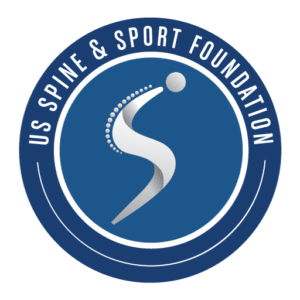Foundation team presents findings of FEMA Fire Prevention & Safety grant at ACSM and ACC-RAC conferences
A team from The Vert Mooney Research Foundation (DBA US Spine & Sport Foundation) recently presented findings of a 3-year FEMA Fire Prevention & Safety grant – Implementation of a Regional Firefighter Wellness Initiative – at two national conferences – American College of Sports Medicine (ACSM) in June 2022 and American Chiropractic College – Research Agenda Conference (ACC-RAC) in July 2022.
- Lane CL, Mayer JM. Worksite exercise adherence in firefighters: findings during a global pandemic and record wildfire season. American College of Sports Medicine Annual Meeting, San Diego, CA, June 2022 (e-poster).
- Mayer JM, Verna JL, Lane CL. Implementation of a firefighter wellness initiative during record wildfires and a global pandemic. Association Chiropractic Colleges – Research Agenda Conference, San Diego, CA, July 2022 (podium).
Abstracts of the presentations are shown below.
ACSM, June 2022
ABSTRACT: Occupational injury is prevalent in firefighters and exercise programming is beneficial to prevent injury and hasten recovery. Yet, implementation of worksite exercise programs has been intermittently successful. PURPOSE: The purpose of this study was to assess adherence factors in firefighters enrolled in a worksite fitness program during a global pandemic and record wildfire season. METHODS: A cross sectional study was conducted in career firefighters (n = 429) from 15 Southern California departments enrolled in a 9-18 month worksite fitness program. Exercise adherence, completed exercise sessions in the intervention period, was compared to baseline age, history of musculoskeletal (MSK) conditions, completion of wellness educational courses and physical fitness measures. ANOVA, T-Tests, or Chi-square were used to assess relationships between exercise adherence and baseline characteristics. RESULTS: Exercise adherence was poorer than anticipated and was attributed to the COVID-19 pandemic and record wildfire season. Significant weak correlations with exercise adherence were noted for age (r = 0.112, p = 0.035), BMI (r = -0.113, p = 0.033), back muscular endurance (r = 0.217, p < 0.000), core muscular endurance (r = 0.113, p = 0.035), and flexibility exercise frequency (r = 0.113, p = 0.035). Those with MSK history had a higher adherence rate than those without (History: 13.2 +/- 22.7%, No History: 4.7 +/- 7.4%, p = 0.021). Those who completed wellness education courses had a higher adherence rate than those who did not (Completed: 29.9 +/- 31.1%, Did Not Complete: 7.2 +/- 14.9%, p < 0.000). No significant relationships were noted between exercise adherence and waist circumference, bodyfat%, Functional Movement Screen, or cardiovascular and resistance exercise frequencies. CONCLUSION: These findings suggest that the most adherent participants were more fit, older, and had a MSK history. However, the poor adherers were less fit, suggesting that firefighters who need exercise programming the most were not adherent. While more research is needed, future iimplementation efforts should minimize delivery barriers, consider a hybrid approach of face-to-face and virtual sessions, and focus on delivering to firefighters who are most vulnerable to MSK conditions.
ACC-RAC, July 2022
ABSTRACT: Objective: Firefighters have elevated rates of cardiovascular, musculoskeletal, and sleep disorders. However, specific guidance on implementing interventions to address these conditions is largely unavailable. The purpose of this project was to implement a firefighter wellness initiative targeting obesity, musculoskeletal injuries, and sleep disorders. Methods: An observational cohort project was conducted in 429 career firefighters from 15 California departments. Assessments included anthropometric, fitness, and patient-reported outcomes that are known health risk indicators. Physical fitness, injury prevention, and educational interventions were customized and triaged according to needs, goals, and risk levels. Interventions were delivered over 9-18 months in one-on-one and group settings, via face-to-face and telehealth sessions. The initiative was implemented during record wildfires and the COVID-19 pandemic, which disrupted delivery. Results: 127 firefighters completed 9-month follow-up assessments. For those at highest risk at baseline, significant improvements (p < 0.05) were observed in waist circumference, muscular endurance, functional movement, exercise frequency, dietary intake, and sleep quality. Conclusion: Improvements in key health risk indicators were observed in firefighters who participated in a wellness initiative. While the relatively low adherence may limit generalizability, the unprecedented environment provided an opportunity to inform future implementation of occupational wellness program

Leave a Reply
Want to join the discussion?Feel free to contribute!